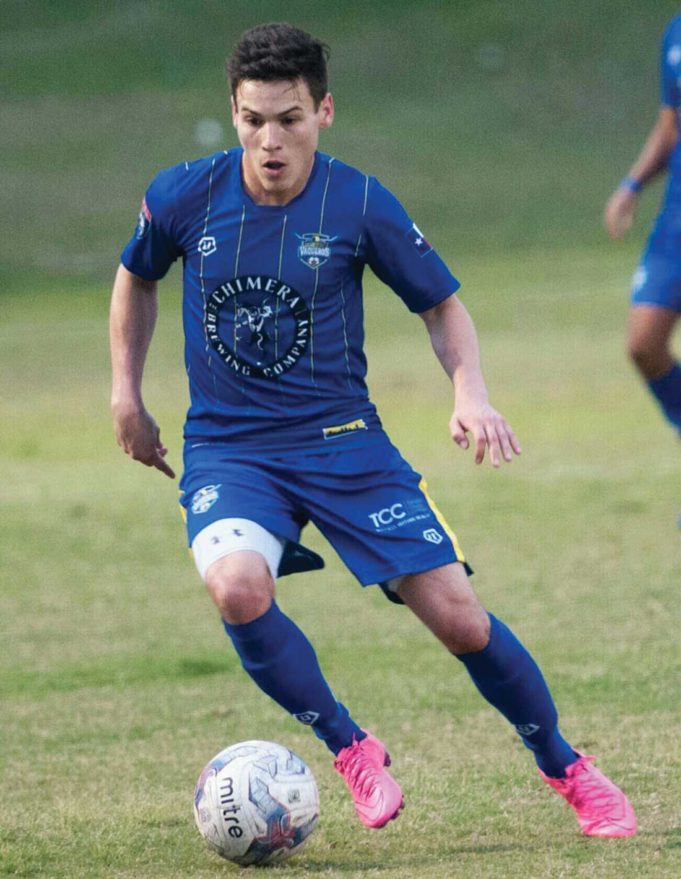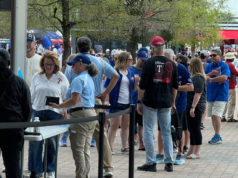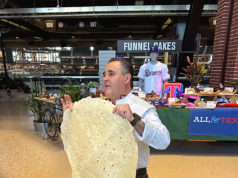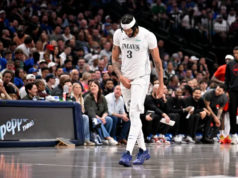The Fort Worth Vaqueros return to the pitch this April with something to prove after a series of tough injuries sidelined any dreams of last year’s playoffs. This season brings new uniforms and new hope for a successful season, but Nick Rainone of the Panther City Hellfire, the team’s fan club, said that winning is only half the fun of the games.
With the absence of the Fort Worth Cats, the Vaqueros are now the only major- or minor-league team to call our fair city home. Rainone said that the local pride and camaraderie that fans share, win or lose, is one of the most appealing aspects of the team.
“This is the only sports team we have here that says, ‘Fort Worth,’ ” Rainone said. “You’re supporting something that has your name on it.”
This year will mark the Vaqueros’ fourth season. Their first was played at LaGrave Field until their lease fell through, forcing them to find a new home: Martin Field at Texas Wesleyan University. Relocating has turned out to be a boon –– the organization is thriving in the community atmosphere. Fans are now closer to the pitch and have access to food trucks and a youth mini-field.
The Vaqueros have been working on a plan for their own facility for some time now. General Manager Tobias Lopez said the team’s goal is to have it built in the next four to five years.
The National Premier Soccer League (NPSL), the Vaqueros’ league, has undergone a few changes since last season, most notably splitting the South Central Conference in two. The new Lone Star Conference will include the Dutch Lions FC (who play in Houston), Houston Regals, Midland/Odessa FC, Shreveport Rafters FC, and Tyler FC, as well as the Vaqueros.
Lopez said that the split occurred in part to keep travel expenses low due to the league’s growth. Every team plays each other once at home and once away with another two matches on each team’s schedule to complete the regular season. The top four teams continue on to the playoffs before competing in the Lone Star Conference Final. The winner goes to the regional semifinals, where they play the champions of the Heartland Conference, the other half of the new South Central Conference.
Last season, a lot of starting Vaqueros got hurt, contributing to the team’s 1-10-1 record. Rainone said that despite the poor showing, they remained competitive throughout the season. Rangy defender Dade Horton is returning to the pitch after spending most of last season on the bench due to a knee injury.
Since last year, former head coach Mark Snell has stepped down but remains with the organization. Lopez, who has been searching for a new coach for months, said the team aims to fill the position by the middle of next month.
The arrival of a new coach should herald other additions to the team as well. Lopez said that fresh blood means current players will have to fight for their jobs. The Vaqueros are known for their aggressive offense, though that may change under new leadership. Team Captain Joseph Cervantes is among this season’s returning players.
Cervantes and the rest of the Vaqueros have been active in the community since the team’s inception. One of the goals this season is to start an affordable youth soccer academy. Team members are known to make regular appearances and work with local children to promote the team’s Kick 90 initiative, an active lifestyle program.
“When the professional athletes get out and show the kids that they care about their communities, that means something to those kids,” Lopez said. “That stays with those kids.”
Tickets to pre-season games are free, and in May the team will travel to Shreveport for the Texas Trail Classic to play a two-game series with the Rafters on the Louisiana team’s home turf. The date of the home season opener is still to be determined.
Voting is open until January 31 to decide which jersey design will be worn by the Vaqueros this year, a tradition since the team’s first season. Season tickets are on sale through the end of the month for $60 (normally $80) and include a jersey that can be used to get into games without having to present a ticket.
“The club system in the U.S. has become a money sport,” Lopez said. “There’s no reason why soccer should be a money sport.”












